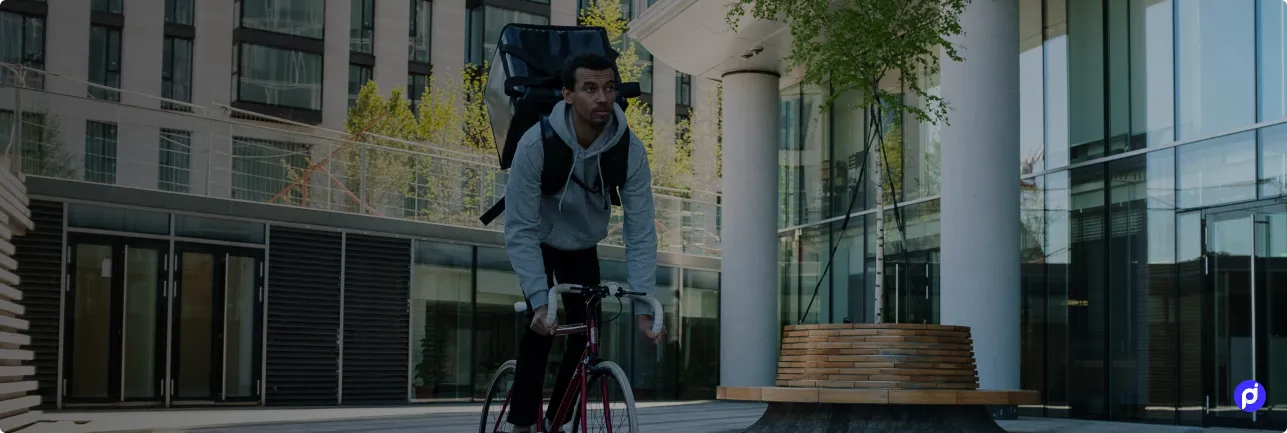The rise of food delivery mobile apps has not only created convenient food ordering but also emphasized sustainable dining practices. Businesses who want to create a greener planet are looking forward to Food Delivery Mobile App Development.
If you have any doubt about the sustainability aspect of the food delivery mobile app then do not forget to read this blog. Here you will get to learn how these apps contribute to a greener, more sustainable future.
Ways Food Delivery Mobile Apps Promote Sustainable Dining:
1. Reducing Food Waste
Food Delivery apps are masters in managing the environment properly by reducing mobile apps food waste. Traditional restaurants often prepare food in bulk, leading to a surplus and eventual waste. However, food delivery services operate on a just-in-time basis, where food is prepared only when an order is placed. This model minimizes the chances of food going to waste.
Moreover, many foods delivery mobile apps now include features that help reduce waste further. For instance, some apps offer the option to order ugly produce that doesn’t meet the aesthetic standards of supermarkets but is perfectly edible. Keeping such features into food delivery mobile apps can help fight against food waste.
2. Encouraging Sustainable Packaging
The environmental impact of packaging is a significant concern in the food delivery industry. Single-use plastics and non-biodegradable materials have long been the norm, but the tide is turning. Food delivery mobile apps are increasingly encouraging restaurants to use sustainable packaging options. Some apps have integrated guidelines for eco-friendly packaging and offer incentives to restaurants that comply.
Innovations in Food Delivery Mobile App Development have also led to the introduction of features that allow customers to opt-out of receiving disposable cutlery and napkins. By giving users, the choice to go green, these apps are reducing the volume of single-use plastics ending up in landfills and oceans.
3. Promoting Local and Organic Food
Supporting local farmers and producers is another way food delivery mobile apps are fostering sustainability. Many apps now have sections dedicated to restaurants that source their ingredients locally and organically. By promoting these eateries, food delivery services are not only providing healthier options to consumers but also reducing the carbon footprint associated with transporting food over long distances.
This emphasis on local sourcing is a critical consideration in Food Delivery Mobile App Development. Integrating features that highlight the origin of ingredients and the sustainability practices of partner restaurants can attract eco-conscious consumers and bolster the local economy.
4. Energy Efficiency and Emissions Reduction
The traditional model of dining out involves multiple trips to restaurants, contributing to increased traffic and carbon emissions. Food delivery apps, on the other hand, optimize delivery routes to ensure efficiency and reduce fuel consumption. Advanced algorithms used in food delivery mobile app development can calculate the shortest and most efficient routes for delivery drivers, cutting down on unnecessary travel.
Additionally, some food delivery services are investing in electric vehicles (EVs) and bicycle deliveries to further minimize their carbon footprint. By leveraging technology and sustainable transportation methods, food delivery apps are playing a crucial role in reducing greenhouse gas emissions.
5. Educating Consumers on Sustainable Choices
Beyond operational efficiencies, food delivery mobile apps have the power to educate consumers about sustainable dining choices. Many apps now provide information on the environmental impact of different food items, helping users make informed decisions. For example, some apps display the carbon footprint of each dish, encouraging users to choose options with lower environmental impact.
These educational features act as proof that welcoming the expertise of a Food Delivery Mobile App Development company is the only way to achieve environmental cautiousness. By Incorporating sustainability education into their platforms, these apps are not only changing consumer behavior but also fostering a culture of environmental responsibility.
Winding Up
Food delivery mobile apps can promote green dining by encouraging eco-friendly practices such as reduced packaging, local sourcing, and lower carbon emissions. A Food Delivery Mobile App Development Company can help in reducing food waste, encourage sustainable packaging, promote local and organic food, optimize delivery routes, and educate consumers on eco-friendly choices. All of these are the gateway to sustainable dining.
As we move forward, the role of food delivery mobile apps in creating sustainable dining will only grow more significant. With this digital tool we can enjoy the convenience of food delivery while contributing to a healthier planet. The future of dining is not just about what we eat, but how we get it, and food delivery mobile apps are at the forefront of this green revolution.
The FAQ’s:
FAQ 1: How do food delivery mobile apps help in reducing food waste?
Answer: Food delivery mobile apps help reduce food waste by operating on a just-in-time basis, meaning food is prepared only when an order is placed, minimizing surplus. Additionally, many apps feature options for ordering “ugly” produce that is perfectly edible but doesn’t meet supermarket aesthetic standards, thus reducing waste.
FAQ 2: What measures do food delivery apps take to encourage sustainable packaging?
Answer: Food delivery apps encourage sustainable packaging by integrating guidelines for eco-friendly packaging and offering incentives to restaurants that comply. They also provide features allowing customers to opt-out of receiving disposable cutlery and napkins, significantly reducing single-use plastics in landfills and oceans.
FAQ 3: How do food delivery apps support local and organic food?
Answer: Food delivery apps support local and organic food by dedicating sections to restaurants that source ingredients locally and organically. This not only provides healthier options to consumers but also reduces the carbon footprint associated with transporting food over long distances, supporting local farmers and the economy.
FAQ 4: What steps are food delivery apps taking to reduce emissions and improve energy efficiency?
Answer: Food delivery apps reduce emissions and improve energy efficiency by optimizing delivery routes to ensure efficiency and minimize fuel consumption. Advanced algorithms calculate the shortest and most efficient delivery routes. Additionally, some services are investing in electric vehicles (EVs) and bicycle deliveries to further reduce their carbon footprint.
FAQ 5: How do food delivery apps educate consumers about sustainable dining choices?
Answer: Food delivery apps educate consumers about sustainable dining by providing information on the environmental impact of different food items, such as displaying the carbon footprint of each dish. These features help users make informed decisions and encourage choices with lower environmental impacts, fostering a culture of environmental responsibility.







